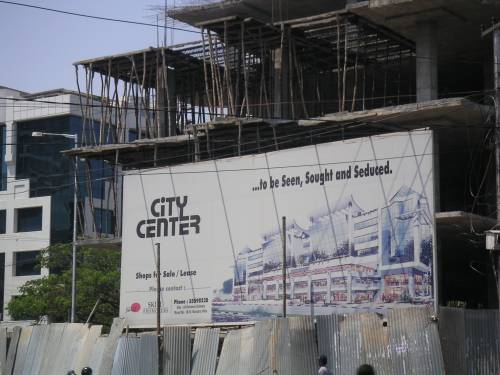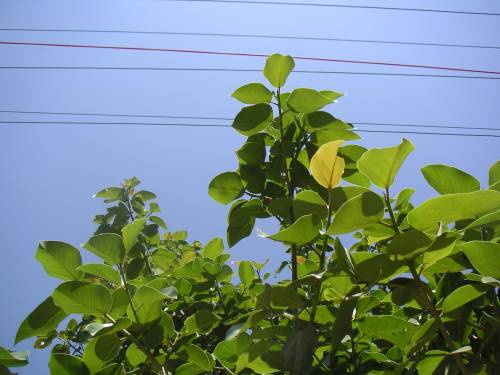hints, allegations and things left unsaid...
Hampi Visit - VI. Finale: I. Allegro
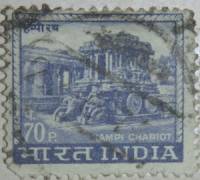 While sorting my old stamp collection, I came across a stamp depicting the Hampi Chariot and that reminded me of the pending final installment of my Hampi travelogues. Better late than never. I’ll go back a few pages in my Journal to the page marked 23rd Jan, 6:30 AM and try to piece together an account with aid from my already fading memory.
While sorting my old stamp collection, I came across a stamp depicting the Hampi Chariot and that reminded me of the pending final installment of my Hampi travelogues. Better late than never. I’ll go back a few pages in my Journal to the page marked 23rd Jan, 6:30 AM and try to piece together an account with aid from my already fading memory. But first a quick lesson in History, Hindu mythology and a few definitions.
The present day Hampi was the once prosperous Hindu kingdom of Vijaynagar that stymied the
Hindus highly regard the trinity of three Gods – Brahma – The Creator, Vishnu – The Preserver and Shiva – The Destroyer. Most temples at Hampi are dedicated to these Gods and their several incarnations. Ganesha in Hindu Mythology is the son of lord Shiva and is depicted as having the head of an Elephant and torso of a man.
A Gopurum is a pyramidal entrance tower or portal of a temple and is usually ornately carved.
Given the volume of material I need to cover, I will have to split my account into at least two parts. Here is the first of the two:
Our breakfast at the guesthouse was delayed by about 30 minutes. Remarkably, the people with me were on time – despite it being a laid back holiday tour for many; it was the guest house canteen staff that had not gotten the food ready on time. By the time we started it was almost 9:00 and the sun looked like it would be at its merciless worst.
As the bus drove to our first stop, the sheer expanse of the archeological ruins at Hampi became clearer to me. Amidst the confused rubble of stones and hills, I would spot a temple (or dilapidated remains thereof) every now and then. Suddenly, as if by magic, a green patch of dense banana plantations would emerge among the boulders looking like an enchanted oasis in the stony desert. We halted first at the Kadlekalu Temple - the larger of the two Ganesha temples (the second one being Sasivekalu). The temple portico was supported by several beautifully carved stone pillars. The sanctum houses a large – and now severely damaged – monolithic idol of the deity. The callousness, with which Ganesha’s trunk and belly had been destroyed, left on me an impression that still haunts me. Just a few hours later, I was to be confronted with such macabre specimens of destruction, that the idol at Kadlekalu would seem like a minor act of casual vandalism.
To my right was Matanga hill, which as legend has it, gets its name from the sage who lived here in austerity. Sugriva is fabled to have taken refuge here from Bali, who due to an old curse by the sage, would not venture near the hills. The hill overlooks the crowded Hampi Bazaar. From our temple I could see a colorful mélange of tourist buses parked in the open ground in front of the Bazaar.
Also visible from here was the stunning light-yellow gopurum of the Virupaksha temple which looked somewhat out of place among the rusty/grey stone ruins. A little later I learned that the temple is one of the few ones at Hampi which survived destruction and marauding for at least three different reasons. The real reason is perhaps a conjugate of all three of them. Some say that the topmost section of the gopuram resembles the holy shrine at Kaaba and hence the temple was spared the wrath of Muslim invaders. Others owe the temple’s intactness to population of wild bores – considered inauspicious by the invaders – in the vicinity of the temple. The third and the most practical of the reasons is the relative frugalness of the temple. Virupaksha is an incarnation of lord Shiva, and like most Shiva temples, this one - owing to the ascetical nature usually associated with the deity – had little to plunder. Prayers and other religious ceremonies are conducted here to date. We descended down the Kadlekalu temple and soon found ourselves at the portal of the Virupaksha temple. A closer inspection of the gopuram revealed that it was every bit from the same kernel (and time period) as the rest of the structures – the light yellow color was but result of zealous application of whitewash. The entry to the temple is not free and photography is only allowed after purchase of an additional Rs. 50 ticket.
The large courtyard of the temple was without a roof and was flanked on either side by covered, stone-pillar supported galleries. There were several monkeys playing in the courtyard, and one of them seeing my small hand-bag clung to my Nehru jacket in anticipation of food. As much as I love monkeys, I also expect them to maintain a respectful distance. This degree of extreme proximity, which I’ve never experienced before (at least not to a monkey at any rate), reduced me to a confused bundle of bones and flesh. The good people, assembled in the courtyard, seeing what at that time must’ve looked like a queer expression of terror, anxiety and excitement, shooed the creature away (or perhaps it is me that they tried to shoo – one never knows – monkeys are considered sacred in a lot of temples, I know of none where I am). The walls enclosing the temple were richly engraved with mythological stories and mythical creatures. Another monkey was perched atop one such wall and was enjoying a coconut that it had probably pilfered from the temple. It drew considerable attention from tourists around me which it handled with candor of a newsreader reading his thousandth news bulletin. Inside one of the dark inner chamber of the temple, was, what would now attract the appellation of, Pinhole Camera that allowed you to view the inverted reflection of the main gopurum.
We came out from the temple about 30 minutes later into the Hampi Bazaar from where we drove to the near by Krishna temple. The idols here are said to have been brought from Orissa. Outside the temple was the Krishna Bazaar where once upon a time diamonds are said to have been traded.
From there we moved to another imposing monolith – that of Narsimha, the lion-faced reincarnation of Vishnu, seated cross-legged on his serpent Adisesha. The statue has been restored extensively. A belt of stone that joins the two knees of the statue was apparently added recently for the statue’s structural stability. The painted iron gate tacked to the enclosure around the statue is unmistakably a 20th century addition.
Just a few yards away from here, was the Veerbhadra temple, which again was spared desecration owing to the deity’s resemblance to a warrior. Photography was prohibited here. Opposite this temple was a temple of lord Vishnu which had met the same fate as most other temples at Hampi.
Our next stop was the zenana enclosures that are said to have housed the women of royal lineage. There were tall watchtowers in the compound with somewhat elaborate balconies that probably allowed the women a glimpse of the outside world. In one corner of the zenana was the intricate two story open pink structure called the Lotus Mahal. There were elaborately carved portals on each side of the structure that had something very
1The earliest escapades of Delhi Sultanate in Deccan came from the Khiljis. The Moghuls (Mughals) come into the picture much much later (16th century). They ruled with such vehemence (besides expanding their sultanate to an extent not witnessed before) that the Medieval Indian period, to a layman, is almost synonymous with the Moghuls (Mughals)
Ever seduced a building...
Bangalore I missed you!

Notes: Taken at St. Marks Road a few days ago. The tree, with some assistance from spring, has transformed itself into quite a spectacle since then. Of all the things I missed, I missed these old, expansive trees the most.
p.s. Whenever I leave Bangalore I leave my soul behind. So don't be alarmed if you meet my wraith merrily devouring appams at Koshy's on a fine Sunday morning.
Quick update
The sudden flurry of activity in my life, ensured the relative absence of the same from my blog. There are times when your blog ceases to be a reflection of your life.
I write this as I wait at Delhi airport for my Deccan Airways flight to Bangalore. I wish there was an equivalent of floo powder that allowed you to travel through TV screens. The Indian cricket team is in Bangalore. I would have stepped into the TV screen during the live telecast of the India Pakistan test match and would have found myself comfortably dangling from the giant screen at the Chinnaswamy Stadium. It's just a low jump and a quick auto ride home from there.
I suspect that after last eleven days of whirlwind touring, several of my organs are going to loudly announce their presence once I am home tonight. For now I will just jot down my itinerary for 26 days, so that I can marvel at it next year. The exercise also allows me to offer hints about what would occupy my blog for next few days..
Bangalore -> Hyderabad -> Chennai -> Bangalore -> Mumbai -> Bangalore -> Hyderabad -> Vijaywada -> Hyderabad -> Vizag -> Delhi -> Bangalore!!!!
I write this as I wait at Delhi airport for my Deccan Airways flight to Bangalore. I wish there was an equivalent of floo powder that allowed you to travel through TV screens. The Indian cricket team is in Bangalore. I would have stepped into the TV screen during the live telecast of the India Pakistan test match and would have found myself comfortably dangling from the giant screen at the Chinnaswamy Stadium. It's just a low jump and a quick auto ride home from there.
I suspect that after last eleven days of whirlwind touring, several of my organs are going to loudly announce their presence once I am home tonight. For now I will just jot down my itinerary for 26 days, so that I can marvel at it next year. The exercise also allows me to offer hints about what would occupy my blog for next few days..
Bangalore -> Hyderabad -> Chennai -> Bangalore -> Mumbai -> Bangalore -> Hyderabad -> Vijaywada -> Hyderabad -> Vizag -> Delhi -> Bangalore!!!!
Ostrich Mantra
Tell me, why should I twitch
at worldly matters on hand
When I can be an Ostrich
with head buried in sand
On a totally unrelated note, I couldn’t help posting this picture:

The pollens of this flower form a structure that looks like a flustered old man who has been rudely awakened from his afternoon siesta.
I vaguely remember good doc advising me to avoid contact sports for a month. I think the good doc – knowing well that I don’t (yet) play rugby - was subtly telling me to avoid Brigade road (and Forum) on Sundays.
On a totally totally totally unrelated note, I came across an Iraqi proverb that I found amusing yet profound:
“When a lion shows you its teeth, don’t assume that it is smiling”
at worldly matters on hand
When I can be an Ostrich
with head buried in sand
On a totally unrelated note, I couldn’t help posting this picture:

The pollens of this flower form a structure that looks like a flustered old man who has been rudely awakened from his afternoon siesta.
I vaguely remember good doc advising me to avoid contact sports for a month. I think the good doc – knowing well that I don’t (yet) play rugby - was subtly telling me to avoid Brigade road (and Forum) on Sundays.
On a totally totally totally unrelated note, I came across an Iraqi proverb that I found amusing yet profound:
“When a lion shows you its teeth, don’t assume that it is smiling”
Second hand books
I am not a big proponent of second hand books. Being the eldest of the two siblings in the family ensured that I always got new school textbooks while my sister got my hand me downs. (It’s a different matter altogether that she would refuse to use my sketch-riddled tattered bundle of loose printed pages that I would try to pass off as “books”). I therefore have been fortunate to have lived my life by the adage – Wear an old coat, buy a new book (I don’t wear a coat – old or new - in balmy Bangalore weather but I still buy new books).
There are however exceptions to the rule (if what I’ve stated in the first paragraph is to be treated as a rule). Books go out of print for many reasons. More often than not it is driven by economic compulsions of the publishing business. If a book is a failure to start with, chances are that it wouldn’t see a second print. Also, a book after a stipulated time (make that very very long time if we are to go by the recent amendments to the copyright law by congress in US), might fall into public domain and therefore might cease to be lucrative for the publishing house, leading to its discontinuation. There could be other reasons too (like the publishing house itself going out of business) and all of them collude in making a book almost impossible to acquire from a ‘regular’ bookshop. What you can’t buy, you borrow, and what you can’t borrow, you look for in a second hand bookshop.
A year after I had moved to Bangalore, I got introduced to a second hand bookshop by a friend. ‘Select’ bookshop is at the end of a small alley which joins right in the middle of the busy Brigade road. The shopkeepers have made little or no attempt to draw attention to the bookstore and so it operates in obscurity which is surprising for its provenance (though not for its moniker). The store spans two stories. The ground floor mostly stocks books on literature. In a small store-room attached to the main bookroom you can also find volumes on science, computers, economy and management. The second floor is given entirely to history. You may also find more than a decade old issues of National Geographic here. I have brought very little from this shop; a little unusual for the amount of time I’ve spent there. I’ve either not found the books I’ve been looking for or the quality of the books has been marginally better than the quality of my school text books at the end of an academic year. And at times I’ve had to leave a book out of concern for the families of silverfishes; which given the profundity of their tunnels, must be profiting greatly from the deep study of classics several years older than them.
I have always rushed past Blossoms bookshop at Church Street (opposite Amoeba); partly because I would wince at very sight of the garish green background on which the shop’s name is printed in maroon and partly because the pani-poori seller at ground floor, surrounded by merry chat eaters, always made the exercise of getting to the first-floor bookshop seem unworthy. They’ve been claiming upto 90% discounts on books since they opened. Sooner than later a bibliophile is bound to yield to such temptations – I did. The source of their fat discounts is the fact that they deal exclusively in second hand books. Like Select, this too is a two storey shop but has a collection which is much larger and better organized. My first visit to the shop was a hurried one (with a colleague breathing down my neck), second late at night when they were rushing to close and third a relaxed one which yielded the proverbial pot of gold at end of therainbow bookshelf. I found four volumes on musicology which if not out of print already are extremely hard to procure in India:
The first three books are hard bound and all four of them are in great condition. So far only my olfactory senses have lodged a minor protest against the musty old-book scent; understandably so as it is a slight deviation from the fresh-print smell they are otherwise used to. The olfactory organ is being recalibrated.
Update: Since a lot of people come to this page while searching for Blossom, I thought I'll add their contact information as part of this post:
Blossom (House of Used Books)
#84/6, Opp. Ameoba, Church Street,
Bangalore - 560001
India
E-mail: blossombookhouse at rediffmail dot com
Ph: 080-25320400
There are however exceptions to the rule (if what I’ve stated in the first paragraph is to be treated as a rule). Books go out of print for many reasons. More often than not it is driven by economic compulsions of the publishing business. If a book is a failure to start with, chances are that it wouldn’t see a second print. Also, a book after a stipulated time (make that very very long time if we are to go by the recent amendments to the copyright law by congress in US), might fall into public domain and therefore might cease to be lucrative for the publishing house, leading to its discontinuation. There could be other reasons too (like the publishing house itself going out of business) and all of them collude in making a book almost impossible to acquire from a ‘regular’ bookshop. What you can’t buy, you borrow, and what you can’t borrow, you look for in a second hand bookshop.
A year after I had moved to Bangalore, I got introduced to a second hand bookshop by a friend. ‘Select’ bookshop is at the end of a small alley which joins right in the middle of the busy Brigade road. The shopkeepers have made little or no attempt to draw attention to the bookstore and so it operates in obscurity which is surprising for its provenance (though not for its moniker). The store spans two stories. The ground floor mostly stocks books on literature. In a small store-room attached to the main bookroom you can also find volumes on science, computers, economy and management. The second floor is given entirely to history. You may also find more than a decade old issues of National Geographic here. I have brought very little from this shop; a little unusual for the amount of time I’ve spent there. I’ve either not found the books I’ve been looking for or the quality of the books has been marginally better than the quality of my school text books at the end of an academic year. And at times I’ve had to leave a book out of concern for the families of silverfishes; which given the profundity of their tunnels, must be profiting greatly from the deep study of classics several years older than them.
I have always rushed past Blossoms bookshop at Church Street (opposite Amoeba); partly because I would wince at very sight of the garish green background on which the shop’s name is printed in maroon and partly because the pani-poori seller at ground floor, surrounded by merry chat eaters, always made the exercise of getting to the first-floor bookshop seem unworthy. They’ve been claiming upto 90% discounts on books since they opened. Sooner than later a bibliophile is bound to yield to such temptations – I did. The source of their fat discounts is the fact that they deal exclusively in second hand books. Like Select, this too is a two storey shop but has a collection which is much larger and better organized. My first visit to the shop was a hurried one (with a colleague breathing down my neck), second late at night when they were rushing to close and third a relaxed one which yielded the proverbial pot of gold at end of the
- An outline of the history of music – Karl Nef – Columbia University Press, 1935
- Milton Corss’ Encyclopedia Of The Great Composers And Their Music – Volume I – Milton Corss and David Ewen – Doubleday and Company Inc, 1962
- Milton Corss’ Encyclopedia Of The Great Composers And Their Music – Volume II – Milton Corss and David Ewen – Doubleday and Company Inc, 1962
- Chamber Music – edited by Alec Robertson – Penguin Books, 1967
The first three books are hard bound and all four of them are in great condition. So far only my olfactory senses have lodged a minor protest against the musty old-book scent; understandably so as it is a slight deviation from the fresh-print smell they are otherwise used to. The olfactory organ is being recalibrated.
Update: Since a lot of people come to this page while searching for Blossom, I thought I'll add their contact information as part of this post:
Blossom (House of Used Books)
#84/6, Opp. Ameoba, Church Street,
Bangalore - 560001
India
E-mail: blossombookhouse at rediffmail dot com
Ph: 080-25320400
Happiness
Mish-mash
My disaster proneness was recently reasserted (along with Murphy’s fond affection for me). I was about to step into a car and just then I was halted a couple of steps short from the car’s door by a loud report. Our car was parked under a tall, not-so-shady coconut tree. The breeze had stirred the tree, causing a coconut to fall down on the road with a crash. I had heard that coconuts usually don’t fall on people’s head. Before I could rejoice at the validity of this ancient wisdom or offer a word of thank to my guardian angels, the tree was rustled again by a strong draught of breeze. This time a dried coconut leaf yielded to the wind and fell straight on me. Now a coconut leaf is not what you think of when you generally think of a leaf. A dried frond with its thick dry stalk and protruding leaf blades is only marginally blunter than glass shards. Fortunately I just sustained minor bruises on my left arm; though I was glued to my spot for a few seconds in a state of shock and utter disbelief. Lesson learnt – never get into a car parked under a coconut tree!
Work took me to the convention center at the Viceroy Hotel in Hyderabad on 2nd March. The architects of the place had vainly attempted to emulate the grandeur of baroque era. Though in places it was all very tastefully done, it fell short of recapitulating the magnificence of 16th-17th centuries and at times the decor bordered tawdriness. I could sense a degree of restrain (perhaps for the fear of offending our 21st century sensibilities) as the display of their baroque intentions was limited only to sculptures. I saw no murals. Still, these neo-quasi-baroque cherubs in the courtyard had their own peculiar charm:
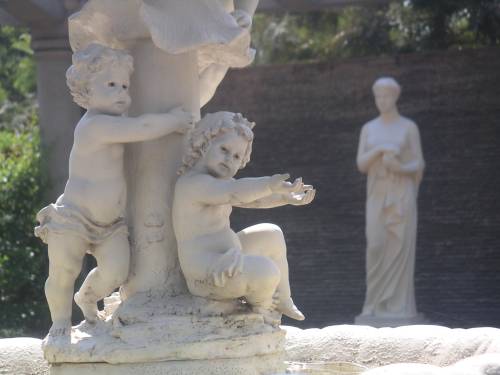
My visit to Chennai a day later saw me setting a new example of absent mindedness. While coming back to Bangalore, I forgot my suitcase at the Hotel. It was only when I had reached the airport, just in time for the flight, did I realize my folly and that too only when my colleague pulled out his suitcase from the car’s boot. (Deepak, don’t you think you were in possession of a somewhat similar contraption). A friend kindly consented to pick it up from the hotel for safekeeping so I expect to have it back very soon.
And finally, I must officially welcome spring to Bangalore:
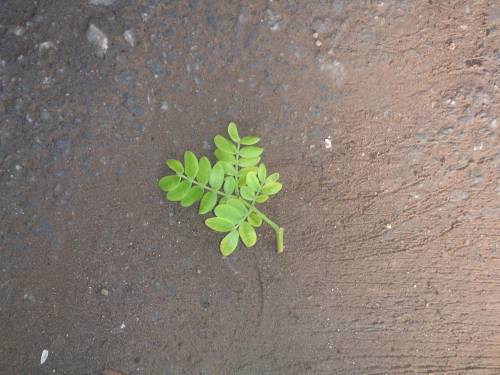
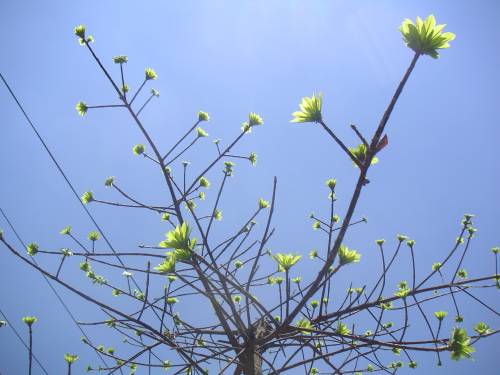
Though as I write this from my apartment’s living room, I can feel pressing need for the fan to be switched on; which means that we are already fast slipping into summers.
Work took me to the convention center at the Viceroy Hotel in Hyderabad on 2nd March. The architects of the place had vainly attempted to emulate the grandeur of baroque era. Though in places it was all very tastefully done, it fell short of recapitulating the magnificence of 16th-17th centuries and at times the decor bordered tawdriness. I could sense a degree of restrain (perhaps for the fear of offending our 21st century sensibilities) as the display of their baroque intentions was limited only to sculptures. I saw no murals. Still, these neo-quasi-baroque cherubs in the courtyard had their own peculiar charm:

My visit to Chennai a day later saw me setting a new example of absent mindedness. While coming back to Bangalore, I forgot my suitcase at the Hotel. It was only when I had reached the airport, just in time for the flight, did I realize my folly and that too only when my colleague pulled out his suitcase from the car’s boot. (Deepak, don’t you think you were in possession of a somewhat similar contraption). A friend kindly consented to pick it up from the hotel for safekeeping so I expect to have it back very soon.
And finally, I must officially welcome spring to Bangalore:


Though as I write this from my apartment’s living room, I can feel pressing need for the fan to be switched on; which means that we are already fast slipping into summers.
| Archives | Blogroll |
|
May 2003 | June 2003 | July 2003 | August 2003 | September 2003 | October 2003 | November 2003 | December 2003 | January 2004 | February 2004 | March 2004 | April 2004 | May 2004 | June 2004 | July 2004 | August 2004 | September 2004 | October 2004 | November 2004 | December 2004 | January 2005 | February 2005 | March 2005 | April 2005 | May 2005 | June 2005 | July 2005 | August 2005 | September 2005 | October 2005 | November 2005 | December 2005 | January 2006 | February 2006 | March 2006 | Current Posts |
All material posted on this blog is copyrighted and may not be used in any form without the explicit permission of the author.

